When the frost sets in and the days grow shorter, many cyclists pack away their gear, resigning themselves to indoor workouts. However, for those willing to embrace the chill, winter road cycling unveils a serene and unique beauty.
This comprehensive guide aims to equip you with the knowledge that all cyclists should know for an enjoyable winter cycling experience, ensuring that you not only endure the cold but look forward to your next ride.
1. Dress in Layers: The Art of Staying Warm

Cycling in winter demands a nuanced approach to clothing to counter the biting cold effectively. Start with moisture-wicking base layers that actively draw sweat away from your body, preventing the discomfort of damp clothes in freezing temperatures.
Starting a cold morning ride, you may feel the chill, but as you warm up while cycling and the temperature rises, having layers to take off becomes useful to avoid overheating.
As you layer up, consider insulating materials that effectively trap heat close to your body, creating a warm microclimate within your clothing. To shield yourself from the winter winds and occasional drizzles, wear a windproof and waterproof outer layer.
The versatility of dressing in layers allows you to regulate your body temperature effortlessly as you adapt to changing weather conditions, ensuring a comfortable and enjoyable ride.
2. Protect Extremities: Shielding Hands, Head, and Feet
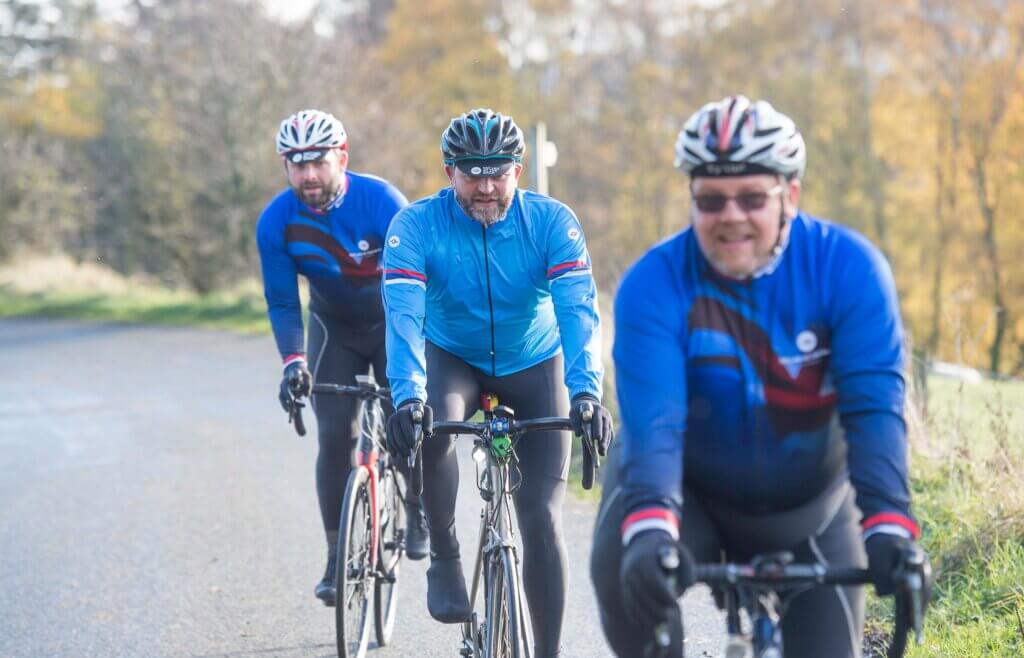
The extremities, such as hands, head, and feet, are most susceptible to the cold during winter cycling. Thermal gloves are indispensable in keeping your hands warm, ensuring flexibility for braking and gear changes.
On particularly wet and cold days, you can bring a spare pair of gloves to change into along the way, ensuring dry and comfortable hands throughout your ride.
Cover your head and ears with a hat or balaclava, to help against heat loss from these vulnerable areas. A neck warmer is also useful to provide an extra layer of insulation and to shield your neck from chilling winds.
Additionally, invest in high-quality, waterproof shoe covers to keep your feet dry and insulated against the winter chill, along with some thick thermal socks for an extra layer of warmth.
By prioritizing the protection of your extremities, you enhance your overall comfort, allowing you to focus on riding your bike.
3. Choose the Right Tires: Navigating Winter Terrain with Confidence
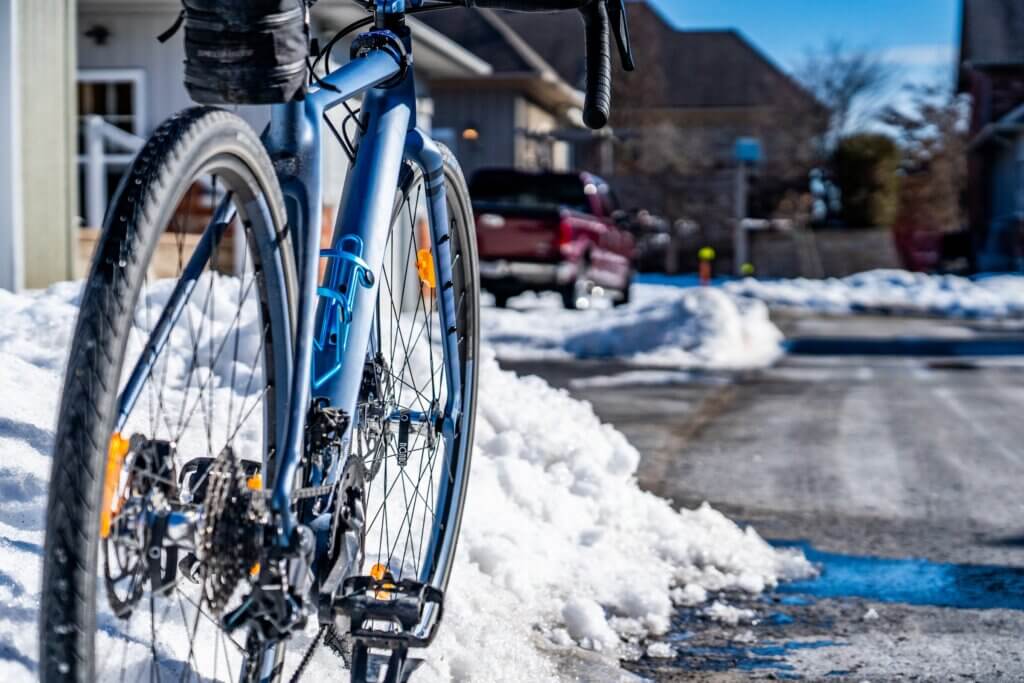
Tire selection for your road bike becomes a critical consideration when navigating winter terrain. Opt for wider tires with excellent traction to effectively handle snow and ice-covered roads.
These wider tires, typically in the range of 25mm to 30mm, provide better stability and control, reducing the risk of slipping in slippery conditions.
In colder weather, it’s recommended to lower your tire pressure by 10-20% compared to what you use in the summer. So, if you typically inflate your tires to 90 PSI during warmer months, consider lowering it to a range of 72-80 PSI for winter rides.
This slight reduction in pressure enhances the rubber’s grip on slippery surfaces, reducing the likelihood of slipping and ensuring a steadier ride on winter roads.
For added grip on icy surfaces, consider investing in studded tires. These winter tires feature metal studs that bite into the ice, providing an extra layer of security as you navigate through winter’s unpredictable landscapes.
4. Check Your Lights: Illuminating Your Path to Safety
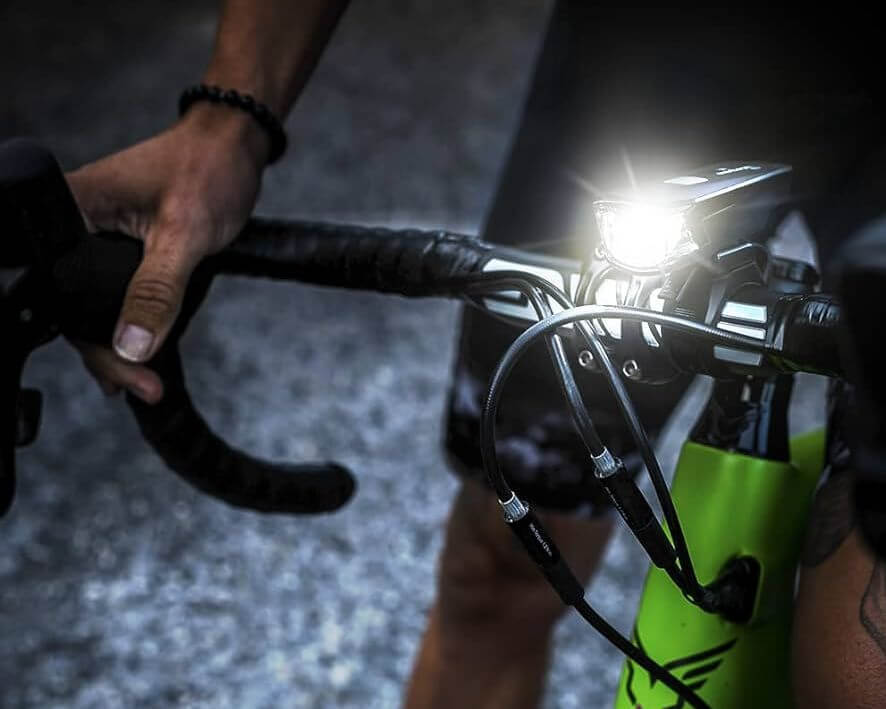
With the sun setting earlier and the dark mornings during winter, proper lighting is a non-negotiable aspect of safe cycling. Install lights on both the front and rear of your bike to ensure you are visible to other road users.
It’s recommended that bikes have white lights for the front and red lights for the rear. Consider using flashing lights to increase attention-grabbing effectiveness.
Remember to keep your bike lights charged up or have spare batteries with you to ensure they perform optimally during your winter rides.
Properly maintained lights are an indispensable component of winter cycling safety, ensuring that you are seen and can see the road ahead clearly.
5. Mudguards/Fenders: Minimizing Winter Splatter
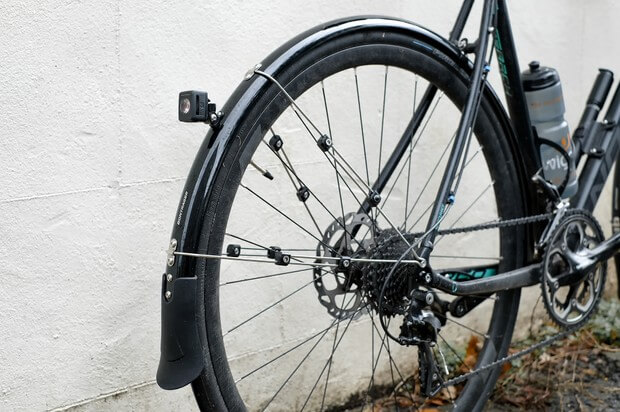
Winter cycling often entails navigating through slush, mud, and water on the roads. Installing mudguards or fenders is a practical solution to prevent these elements from splashing onto you and your bike, ensuring a cleaner and more comfortable ride.
Full-length mudguards are better at stopping spray coming off the tires and hitting riders behind you. It’s worth noting that many cycling clubs have rules mandating the use of full-length mudguards during winter group rides to help everyone stay dry and clean and maintain a respect among cyclists.
Not only do mudguards keep you and your bike protected, but they also contribute to a more enjoyable and cooperative group cycling experience during the winter months.
6. Maintain Your Bike: Maintain a Smooth Ride
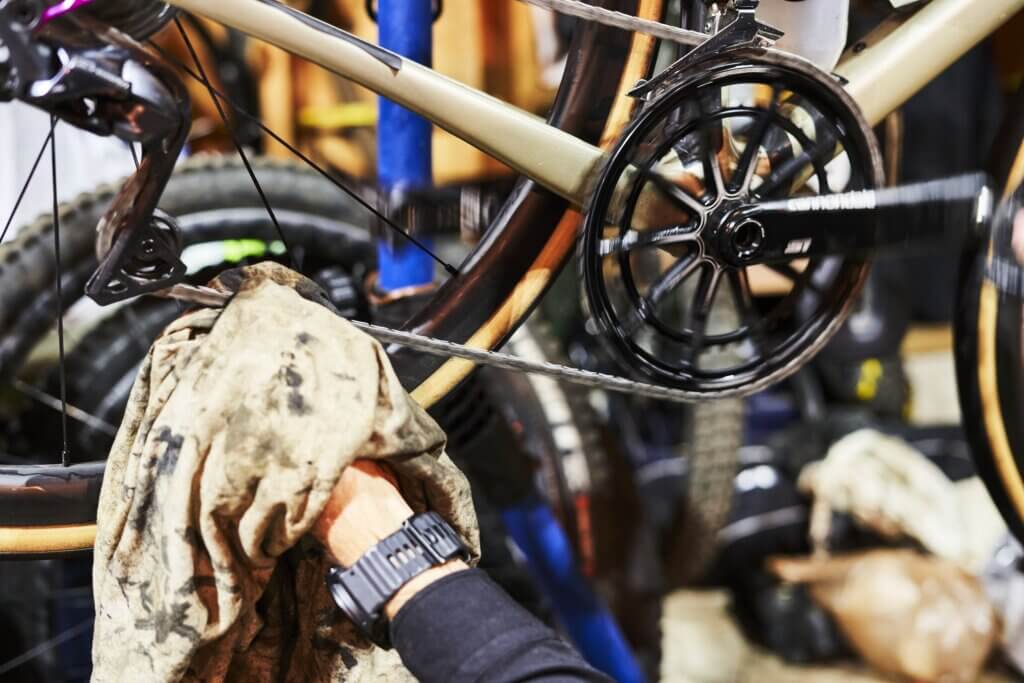
Winter weather introduces unique challenges to bike maintenance, with salt and slush posing potential threats to your trusty two-wheeler. The last thing any cyclist wants on a cold winter’s cycle is a mechanical issue with their bike along the way.
Regularly clean and lubricate your bike to prevent corrosion caused by exposure to road salt. Pay close attention to the functionality of your brakes and gears, ensuring they operate smoothly in the face of winter’s harsh conditions.
Winter maintenance is not only about preserving your bike’s performance but also about ensuring its longevity. A well-maintained bike not only rides better but also stands up to the challenges of winter riding with resilience.
7. Plan Your Route: Choosing Wisely for Winter Rides
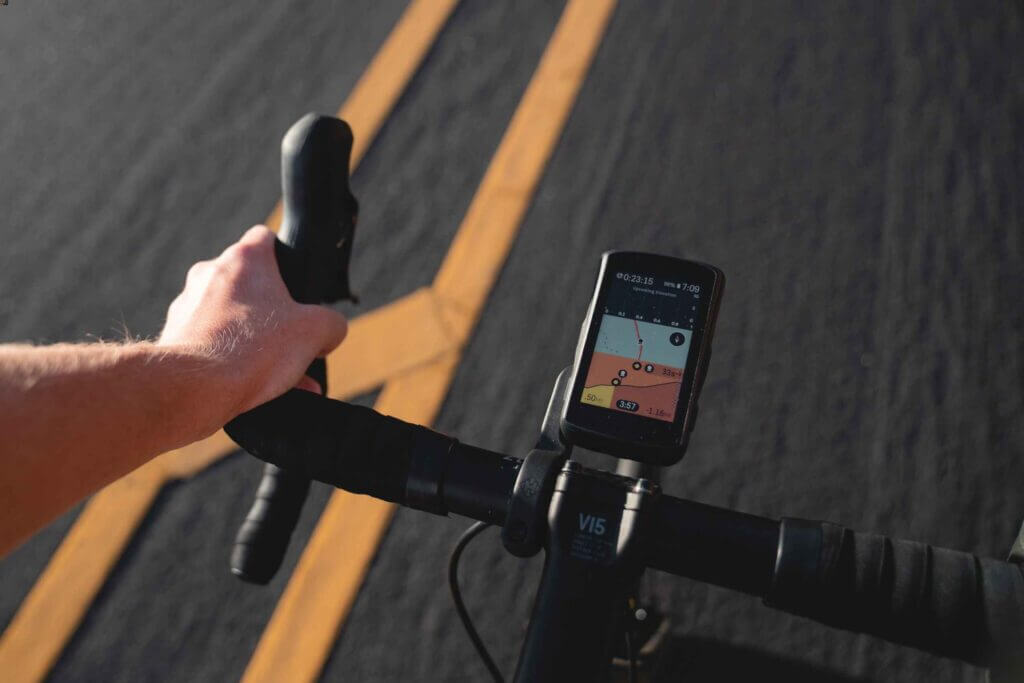
The route you choose significantly influences your winter cycling experience. Opt for well-traveled and well-maintained routes, minimizing surprises and ensuring a smoother ride.
In winter, road conditions can be unpredictable particularly early in the morning, sticking to familiar paths reduces the likelihood of encountering unexpected challenges.
When conditions are poor, steer clear of steep hills and areas with heavy traffic, prioritizing safety and minimizing the chance of getting caught in a challenging situation.
By planning your route strategically, you enhance both safety and enjoyment during your winter cycling escapades.
8. Know the Weather Forecast: Staying Informed for a Seamless Ride

Being a winter cyclist requires a heightened awareness of weather conditions. Check the forecast before each ride to anticipate changing weather patterns.
Equip yourself with the necessary gear based on the forecast, whether it’s additional layers for colder temperatures or waterproof clothing for potential rain or snow.
Staying informed about the weather ensures that you are adequately prepared for the conditions you may encounter during your ride. By incorporating weather awareness into your routine, you can turn potential challenges into opportunities for a well-prepared and enjoyable winter cycling experience.
If the weather forecast is particularly bad you should consider doing an indoor cycle instead on your bike turbo trainer.
9. Slow Down on Bends and Descents: Navigating Tricky Turns Safely

Cycling on winter roads demands an extra amount of caution with regards to your speed and control to navigate safely. Reduce your speed when approaching curves, bends, or descents, especially when the road is wet, icy, or covered in snow.
Maintaining a firm grip on the handlebars is crucial, avoiding sudden movements to retain control over your bike. When braking, do so gently and in a straight line before a turn to minimize the risk of skidding.
Choose the cleanest and safest path through turns, avoiding patches of ice or snow that could compromise your stability. In particularly treacherous sections, such as shaded areas that retain ice, exercise caution and, when in doubt, dismount and walk your bike through to ensure safety.

